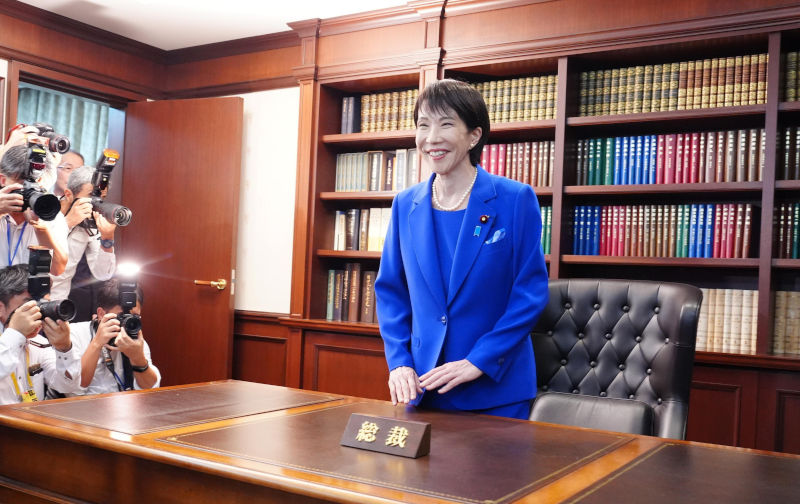Takaichi’s victory is a milestone on the road to a new party system in Japan
October 23, 2025
In the Liberal Democratic Party presidential election held on 4 October 2025, Sanae Takaichi defied widespread expectations by defeating Shinjiro Koizumi, who had been considered the frontrunner. Former prime minister Taro Aso is being lauded as instrumental in supporting Takaichi’s upset victory.
Amid the dissolution of various party factions triggered by the former Abe faction’s political funding scandal, Aso was the only one to retain his faction. He leveraged his organisational power to win over the camps behind Toshimitsu Motegi and Takayuki Kobayashi, who had lagged behind in the first round of voting, consolidating support for Takaichi in the runoff.
Some have criticised the outcome as a product of outdated factional politics. As an Asahi Shimbun editorial observed, the final stage of the LDP presidential race revealed the persistence of traditional factional politics, with many candidates seeking endorsements from senior figures such as former prime ministers Taro Aso and Fumio Kishida. But such assessments may not fully capture the dynamics behind the result.
The LDP election illustrates the diminished role of factions within Japanese politics. Many former factions lacked cohesion and had lost the ability to rally behind candidates. Paradoxically, it was precisely because factions had declined that Aso, who maintained his organisation, was able to exert influence. Traditional newspaper and television media have continued to calculate votes based on factional ties, leading to the incorrect prediction of a Koizumi landslide.
The votes of party members also significantly influenced the outcome. This LDP presidential election included votes from general party members and supporters, from which Takaichi secured the most support. Behind this shift was a sense of crisis following the LDP’s crushing defeat in the July House of Councillors election and the rise of the new right-wing party, Sanseito. The loss reflected public discontent over rising inflation and corruption scandals, as well as frustration with the party’s lack of reform momentum. Many party members rallied behind Takaichi as the leader whom they believed could reclaim the LDP’s lost conservative base.
But Takaichi’s victory brought about an unexpected turn of events. The Komeito, the ruling coalition partner dissatisfied with the Aso-Takaichi regime, decided to dissolve the coalition on 10 October. The LDP’s rightward shift, aimed at winning conservative support, collapsed the 26 year-long LDP-Komeito partnership.
Whether this will trigger a new political realignment remains unclear. Unless the opposition can field a unified candidate in a hung parliament, Takaichi will be designated as prime minister in the Diet, becoming Japan’s first female prime minister. But with the LDP having lost its majority in both houses and being unable to form a coalition with opposition parties, the Takaichi administration is likely to struggle to pass budgets and legislation without policy co-ordination with the opposition, resulting in a weak political foundation.
The new administration’s immediate challenge lies in economic policy. The Ishiba administration struggled to contain inflation and failed to raise wages above the inflation rate, which was a key reason for its defeat in the July election. Takaichi is pursuing proactive fiscal policies, including measures to curb inflation and expand local government grants. She is known as a hawkish politician, but her fiscal policy departs from the traditional conservative emphasis on austerity. In this respect, Takaichi is closely aligned with Abenomics.
In contrast, Takaichi is not expected to bring a major policy shift in diplomacy or national security from the Ishiba administration. Japan’s diplomatic stance — aimed at balancing an assertive China seeking to expand its presence in the East and South China Seas — has remained consistent since the second Abe administration. The Takaichi government is likely to continue prioritising the Japan-US alliance while strengthening ties with allies and like-minded partners such as those in the Quadrilateral Security Dialogue.
Some opposition parties and segments of the media are concerned that Takaichi’s right-wing posture may worsen relations with China and South Korea. With the moderating influence of the Komeito gone, it is expected that Takaichi, swayed by right-wing forces within the LDP, may take a hardline stance on historical and territorial issues. This risks an unexpected deterioration in relations with China and South Korea.
Takaichi needs to present effective economic policies, such as measures to curb rising inflation, to gain public support and stabilise her administration. But ultimately, she must win a general election and secure a stable majority to sustain her government. Policy co-ordination with the opposition alone will not be enough to bring about real change. Yet without the electoral co-operation of Komeito, backed by the Soka Gakkai, many LDP lawmakers are unlikely to retain their seats.
As Japan moves toward a full-fledged multiparty system, the Takaichi administration faces the challenge of navigating increasingly difficult and complex domestic and political circumstances.
Republished from East Asia Forum, 17 October 2025
The views expressed in this article may or may not reflect those of Pearls and Irritations.
